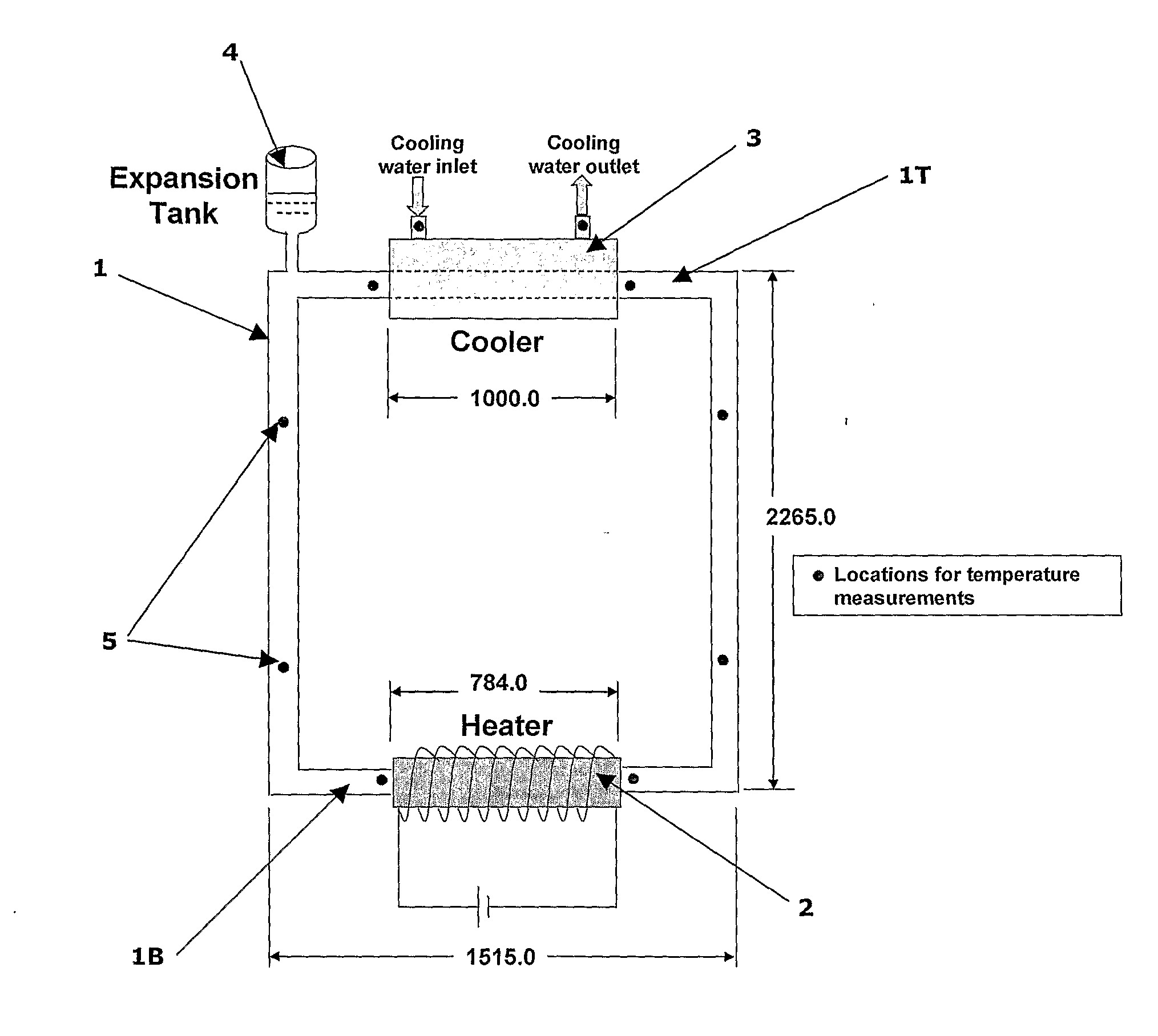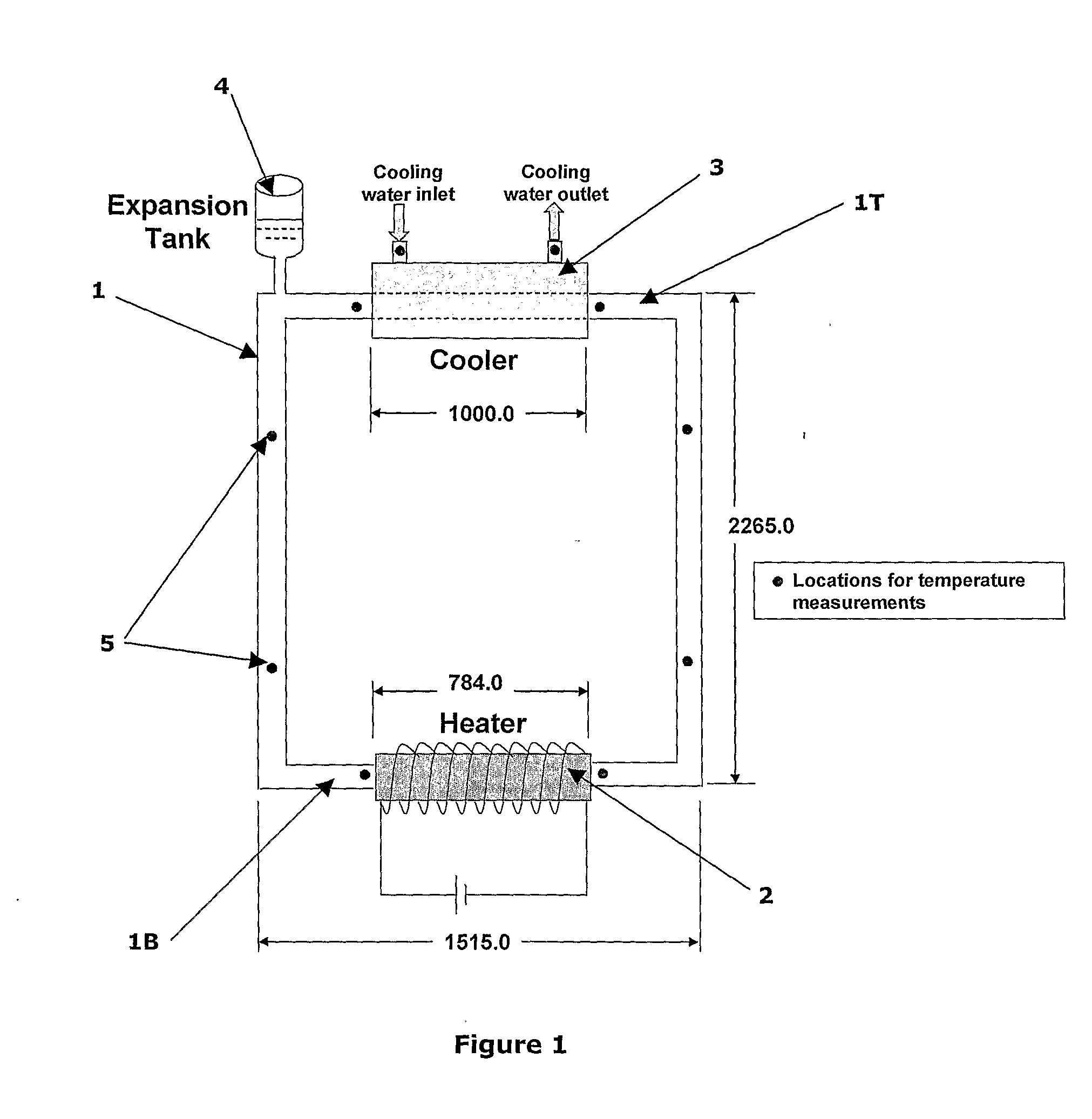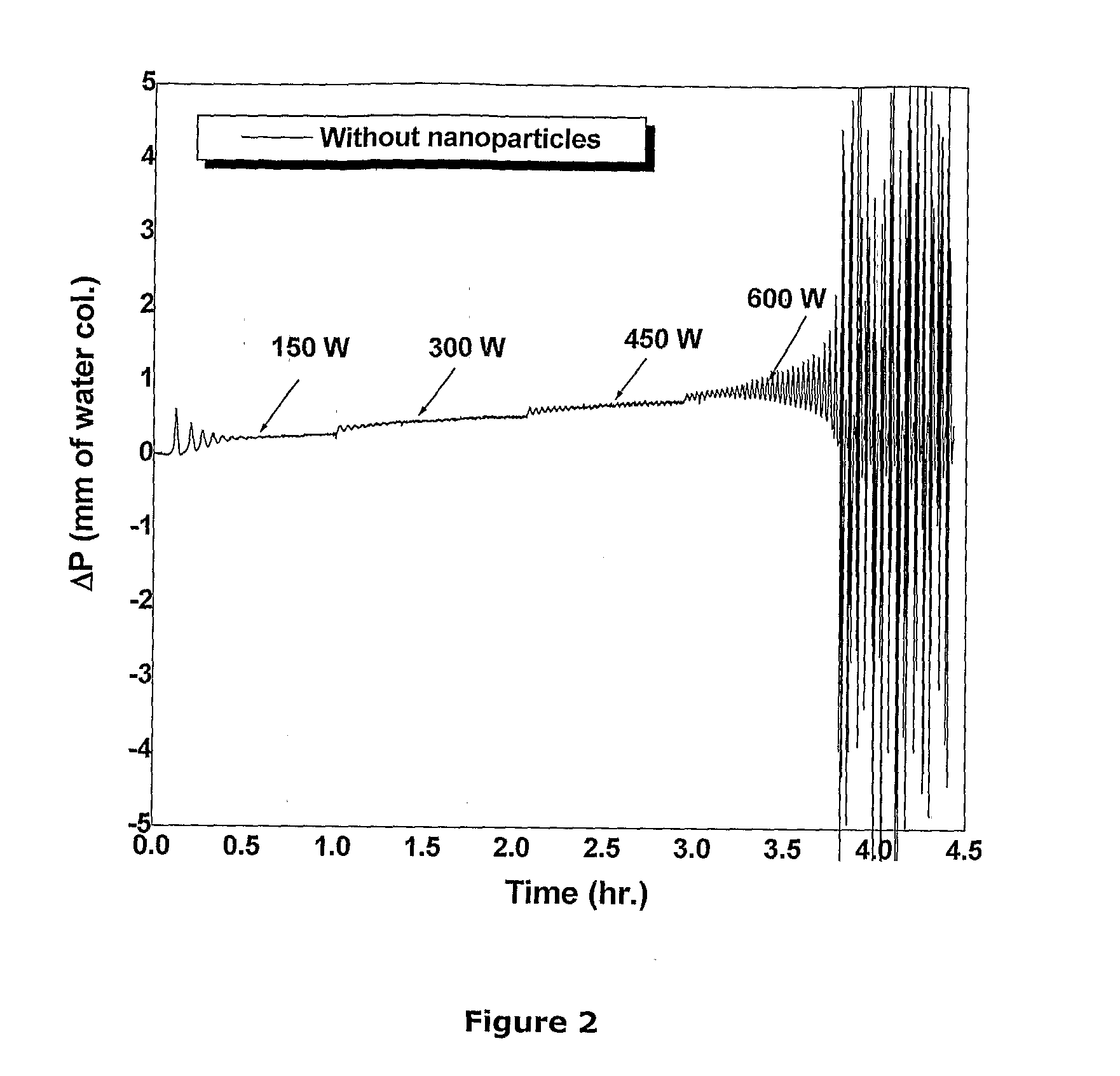Stabilizing natural circulation systems with NANO particles
a nano-particle and nano-particle technology, applied in the field of stab, can solve the problems of inherently more unstable, circulation system, flow instabilities, etc., and achieve the effects of avoiding heat loss, reducing flow instabilities, and increasing flow ra
- Summary
- Abstract
- Description
- Claims
- Application Information
AI Technical Summary
Benefits of technology
Problems solved by technology
Method used
Image
Examples
example i
Preparation of the Nano Particle Dispersed in Water Heat Recovery Media of the Present Invention for Natural Circulation Systems
[0047]The aqueous solutions of dispersed nanoparticles in water were prepared separately by adding the different concentrations (by weight) of Al2O3 (Alumina) nano powder of average particle size 40-80 nanometer and 99.7% purity to water. To prevent the particles from agglomerating and settling, the suspension was sonicated in an ultrasonic bath. The dispersion of the particle was first done by mixing the required volume of powder in the chemical measuring flask with distilled water and then using Ultrasonic vibration to disperse it. After making a proper mixture, the respective flasks having nanoparticles of desired concentrations, were kept again under ultrasonic vibration for about 4 hours, which was a sufficient time to ensure stable particle dispersion in water without agglomeration.
An Embodiment of Closed Loop Natural Circulation System for Use with t...
example ii
[0054]Under this example the natural circulation behaviour in the loop with water alone as per the conventional base fluid was studied during a power transient for an initial power of 150 W and step rise of 150 W. For the purpose the system as per accompanying FIG. 1 was used and water was introduced into the system as the heat recovery media.
[0055]The results obtained are reflected in accompanying FIG. 2. Reference is now invited to accompanying FIG. 2 which is the illustration of the transient natural circulation behaviour along the loop of FIG. 1, during a power raising process from an initial power of 150 W in steps of 150 W. As clearly apparent from FIG. 2, the flow was found to be stable until the power is raised to 450 W. However, in the next step of power rise at 600 W, flow instabilities appeared in the loop characterized by large amplitude flow oscillation with flow reversals.
example iii
[0056]Under this example the natural circulation behaviour in the loop with water alone during a power transient for an initial power of 300 W and step rise of 100 W Was studied. The results are represented in accompanying FIG. 3.
[0057]Reference is invited to accompanying FIG. 3, which illustrates that under this study instabilities were observed even at lower heat input at 300 W. The amplitude of oscillations kept on increasing with rise in power. At 600 W, a power setback behaviour study was conducted to illustrate the instability behaviour during a setback process. The power was reduced to 400 W from 600 W in steps of 100 W. The flow instabilities were found to continue although their characteristics were different for the corresponding powers during rising steps.
PUM
 Login to View More
Login to View More Abstract
Description
Claims
Application Information
 Login to View More
Login to View More - R&D
- Intellectual Property
- Life Sciences
- Materials
- Tech Scout
- Unparalleled Data Quality
- Higher Quality Content
- 60% Fewer Hallucinations
Browse by: Latest US Patents, China's latest patents, Technical Efficacy Thesaurus, Application Domain, Technology Topic, Popular Technical Reports.
© 2025 PatSnap. All rights reserved.Legal|Privacy policy|Modern Slavery Act Transparency Statement|Sitemap|About US| Contact US: help@patsnap.com



